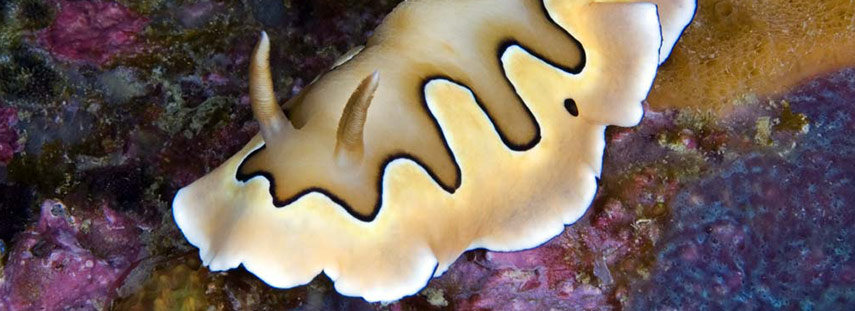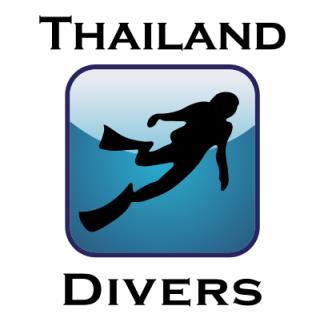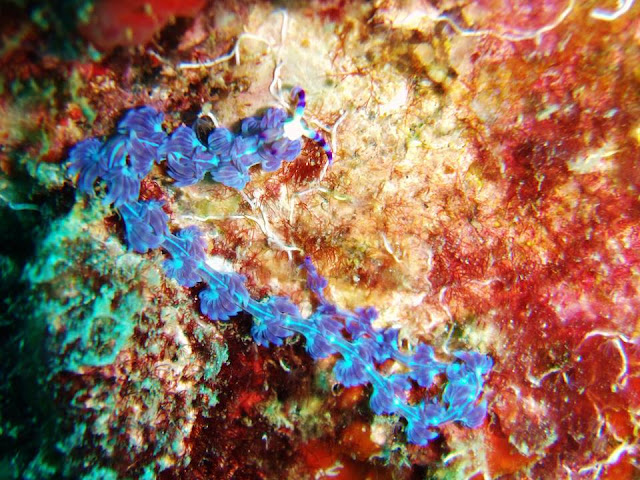What this will be is a quick guide to some of the amazing fish we see when diving in the waters off Phuket Thailand. Different fish will be featured everyday and as the Similan islands season is about to start too these fish will be for sure seen in these waters too. The scuba diving around Thailand Phuket is some of the best you will find anywhere. From the shallow bays of the Racha Islands that are perfect for people who want to discover scuba diving Phuket is ideal. Then again the sloping reefs are ideal location for people who want to learn to scuba dive Phuket has dive sites for all levels of diver. Then as many experienced divers will know that just to the north west of Phuket lies the Similan islands and these are normally done on a liveaboard trip for 2-4 days. This is by far the best diving Phuket has and the nicest way to get the most out of the diving as it gets you (on the 3 or 4 day trip) to have a day diving Richelieu rock which is situated just north on the Similans and is part of the Surin islands national park. Phuket liveaboards to the Similan islandand other destinations are available from all good Phuket dive center.
What strikes many new divers as odd is when a group of experienced divers all gather around a small bit of coral or plant life, all pointing and taking photos. All you can see it a small unidentifiable thing thats doing nothing. When what you want is the big stuff. The chances are that the divers are all looking at a rare "Nudi". I was the same. There are many divers now who spend their whole dive looking for the tiny critters and taking photos of them. When people come scuba diving Phuket they will hire a private guide just so they can spend time scouring the site for these tiny yet beautiful guys. Many people chose to go scuba diving Thailand especially as there is an abundance of rare and colourful creatures like these Nudibranchs. Phuket diving is a big draw as there are so many great divesites close by and Phuket has all the big hotels too so you can dive in the top locations and still return to a top hotel in the evening.
Diving in Phuket has another great advantage and that is the chain of islands just to the north west of Phuket. These are called the similans and the diving here is some of the best in the world. It is possible to do day trip to the similan island national park from Phuket but its far better to visit on a similan island liveaboard. This way you can have two or three days there in an air conditioned cabin with great food and not have to waste time returning each night. This way you get to do four dives per day rather than the two on a day trip. Being a marine national park means no fishing, no touching and above all its closed for six months of the year so everything is in its natural state and there is just simply so much to see.
A nudibranch is a member of what is now a taxonomic clade, but used to be a suborder, of soft-bodied, shell-less marine opisthobranch gastropod mollusks, which are noted for their often extraordinary colors and striking forms. The clade Nudibranchia is the largest clade within the heterobranchs, with more than 3,000 described species. The word "nudibranch" comes from the Latin nudus, naked, and the Greek brankhia, gills.Nudibranchs are often casually called "sea slugs", a non-scientific term. This has led some people to assume that every sea slug must be a nudibranch. Nudibranchs are very numerous in terms of species, and are often very attractive and noticeable, but there are a wide variety of other kinds of sea slugs, and these belong to several taxonomic groups that are not very closely related to nudibranchs. A fair number of these other sea slugs are colorful, and can be confused with nudibranchs. These other marine shell-less gastropods or "sea slug" groups include additional heterobranch shell-less gastropod groups such as the Cephalaspidea sea slugs including the colorful Aglajidae, and other heterobranchs such as the Sacoglossa, the sea butterflies, the sea angels, and the often rather large sea hares. The term sea slug is also sometimes loosely applied to the only very distantly related, pelagic, caenogastropods within the superfamily Carinarioidea, and may also be casually used for the even more distantly related pulmonate sea slugs, the Onchidiidae.Distribution :Nudibranchs occur in seas worldwide.Habitat :Nudibranchs live at virtually all depths of salt water, but reach their greatest size and variation in warm, shallow waters. Hence the tropical water around Thailand is what makes Phuket scuba diving as popular as it is for divers and underwater photographers alike.
Description
The body forms of nudibranchs vary enormously, but because they are opisthobranchs, unlike most other gastropods they are bilaterally symmetrical because they have undergone secondary detorsion. Most species have venomous appendages on their sides. these are used to deter predators. Many also have a simple gut and a mouth with a radula. Their eyes are simple and able to discern little more than light and dark. NudibranchThe eyes are set into the body, are about a quarter of a millimeter in diameter, and consist of a lens and five photoreceptors. They vary in adult size from 20 to 600 mm. The adult form is without a shell or operculum (a bony or horny plate covering the opening of the shell, when the body is withdrawn). The name nudibranch is appropriate, since the dorids (infraclass Anthobranchia) breathe through a "naked gill shaped" like branchial plumes of bushy extremities on their back, near their tail rather than using gills. By contrast, on the back of the aeolids in infraclass Cladobranchia there are brightly colored sets of tentacles called cerata. Nudibranchs have cephalic (head) tentacles, which are sensitive to touch, taste, and smell. Club-shaped rhinophores detect odors.
 Reproduction
Reproduction
Nudibranchs are hermaphroditic, and thus have a set of reproductive organs for both sexes, but they can rarely fertilize themselves. Nudibranchs typically deposit their eggs within a gelatinous spiral.
Feeding
Most nudibranchs are carnivorous. Some feed on sponges, others on hydroids, others on bryozoans, and some are cannibals, eating other sea slugs, or, on some occasions, members of their own species. Other groups feed on tunicates, barnacles, or anemones. The surface dwelling nudibranch, Glaucus atlanticus is a specialist predator of siphonophores, such as the Portuguese Man O' War. This predatory mollusc sucks air into its stomach to keep it afloat and using its muscular foot it clings to the surface film. If it finds a small victim Glaucus simply envelopes it with its capacious mouth, but if the prey is a larger siphonophore the mollusc nibbles off its fishing tentacles, the ones carrying the most potent nematocysts. Like some others of its kind Glaucus doesn't digest the nematocysts, instead it uses them to defend itself by passing them from its gut to the surface of its skin. Its things like this is what makes them so addictive to watch. They move slowly so easy to film and are very colourful and varied to look at. This is another reason why on a similan liveaboard you tend to get photographers together as they move at a much slower rate so they can get great shots of Nudies.
Colors and camouflage
Among this group can be found the most colorful creatures on earth. In the course of evolution, sea slugs have lost their shell because they have developed other defense mechanisms. Their anatomy may resemble the texture and color of the surrounding plants, allowing them to camouflage (cryptic behavior). Others, as seen especially well on chromodorids, have an intense and bright coloring, which warns that they are distasteful or poisonous (aposematic coloration). Nudibranchs that feed on hydroids can store the hydroids' nematocysts (stinging cells) in the dorsal body wall, the cerata. This is why places like the Similans is such a great place for nudibranchs is the colourful surroundings which makes for amazing nudies and a similan liveaboard such a great place to spend a few days diving. The nematocysts wander through the alimentary tract without harming the nudibranch. Once further into the organ, the cells are brought to the specific placements on the creature's hind body via intestinal protuberances. Nudibranches can protect themselves from the hydroids and their nematocysts It is not yet clear how, but special cells with large vacuoles probably play an important role. They can also take in plants' chloroplasts (plant cell organelles used for photosynthesis) and use them to make food for themselves. Another method of protection is the release of a sour liquid from the skin. Once the specimen is physically irritated or touched by another creature, it will release the slime automatically.
Taxonomy
The taxonomy of the Nudibranchia is still under investigation. Many taxonomists in the past treated the Nudibranchia as an order, based on the authoritative work of Johannes Thiele (1931), who built on the concepts of Henri Milne-Edwards (1848). Newer insights derived from morphological data and gene-sequence research, have confirmed these ideas. On the basis of investigation of 18S rDNA sequence data, there is strong evidence for support of the monophyly of the Nudibranchia and its two major groups, the Anthobranchia/Doridoidea and Cladobranchia.
So like so many before you when diving take the time to actually start looking for the small stuff as everyone can see a eight meter whale shark but how many miss the one centimeter nudi? and what is the most colourful?? When considering a liveaboard similan islands is a serious place to think about. Easy diving and so much to see and all in easy reach of even the newest PADI open water diver. This way you can see these great guys even when you learn to scuba dive in Phuket. Similan diving is in the top ten locations in the world and Richelieu rock which lies in the surin island national park and is done on many similan islands liveaboards was in Jaques Cousteau's top ten of all time. So pop into a top dive shop Phuket like Thailand divers and see whats on offer as there will always be a trip leaving that will suit your time frame and budget. Then you too can get hooked on these magical creatures too.














Load more comments